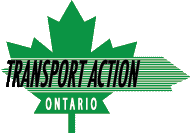By
Transport Action Ontario
|
Intercity Rail and Bus ,
Latest News ,
Northern Ontario ,
Urban Transit
Two of Premier Ford`s signature campaign promises were to end the Ontario cap & trade system and to reduce gasoline taxes by 10 cents per liter (cpl). The gas tax cut has now been clarified to involve a 4.3 cpl reduction from ending cap & trade, and 5.7cpl from an outright gas tax reduction. Interestingly, the party also has promised to retain gas tax transfers to municipalities for public transit – currently at 2 cpl ramping up to 4 cpl by 2021.
Several Transport Action Ontario (TAO) members attended a Gas Tax Forum on July 25, 2018 http://www.transportfutures.ca/gastax, put on by our friend Martin Collier of Transport Futures. The forum discussed the economic, social and environmental aspects of gasoline pricing and the gas tax. The most interesting topic concerned the challenge Ontario will face in cancelling cap & trade, and the likely federal backstop that will come into place in 2019.
The Ontario cap & trade program started in early 2017, in conjunction with existing programs in Quebec and California. Each quarter, emission allowances were provided by government – either free or sold at government auctions. Allowances could also be bought and sold between emitters (the “trade”). Cap refers to the limited total number of allowances the government releases into the market annually. The regulated industries were large industrial emitters, large institutions as well as fuel distributors.
Over the past year, the system has worked well with stable prices and good industry acceptance. Apparently 272 Ontario companies have purchased $2.9B of allowances at an average price of about $18 per tonne CO2 or 4.3 cpl (fuel distributors)
Many of these allowances will have been for current operations, with companies presumably passing costs of allowances onto customers where possible. Future allowances have also been purchased in some cases, but now cannot be sold, as trading for Ontario companies was cut off by regulation in early July. Speakers at the Forum speculated that the sunk costs of future allowances could be as high as $2B. Presumably these owners will request compensation from the government.
On July 23, the Ontario government introduced Bill 4 – an Act winding up/repealing the cap and trade program. In interviews, the Minister of the Environment has stated that compensation costs will not exceed $5 Million, as the new legislation is designed to inoculate the government against litigation. Time will tell if Ontario has another major contracting scandal on its hands!
There is also litigation concerning the government`s process to end cap & trade. On July 18, the Canadian Environmental Law Association applied under the Environmental Bill of Rights for a review of the government process to dismantle cap & trade without consulting the people, as required by the Bill of Rights.
The Forum also discussed the Federal Carbon Pricing Backstop. This kicks into effect in January, 2019 for any province that does not have a suitable carbon pricing regime in place by September, 2018. (Ontario Bill 4 requires the government to prepare a climate change plan, but no details or timing is given.) The backstop consists of a carbon levy for fossil fuels and an output-based emission intensity price system for large industrial facilities (with up to 90% free allocation for competitively challenged industries, as announced in late July). The 2019 rate will be $20/tonne, rising annually by $10/tonne. Funds collected in each province are returned to the provincial government or directly to “persons”(individuals or companies).
TAO is a strong supporter of carbon pricing. Data shows that higher gasoline prices do reduce gasoline demand, especially in cities with good public transit. This is good for traffic congestion, air quality and climate change mitigation. Furthermore, the revenue from Ontario cap & trade was partially earmarked for new public transit projects. How can the province keep its promise relating to support of public transit, especially in the Greater Toronto and Hamilton Area (GTHA) where costly rapid transit extensions have been needed for many years? Economic and physical growth shows little sign of slowing across the GTHA, and for this we should be thankful. However, the intensification is only making the need for medium-to-high capacity public transit even more urgent. If considerable amounts of tax revenue are to be essentially relinquished, how are such costly facilities to be funded within a reasonable period of time?
We can only hope that, after the dust settles, Ontario will have an effective carbon pricing regime. TAO will continue to track this important item closely.
Peter Miasek
President, Transport Action Ontario

